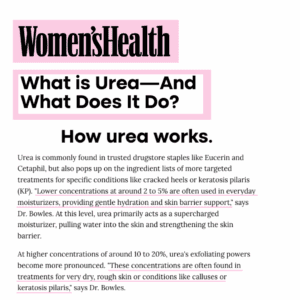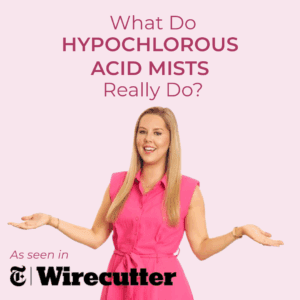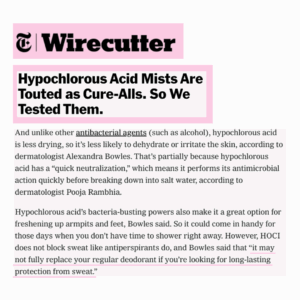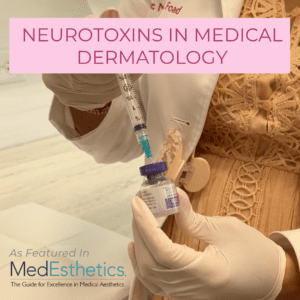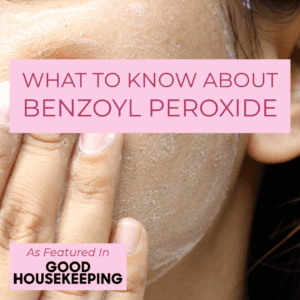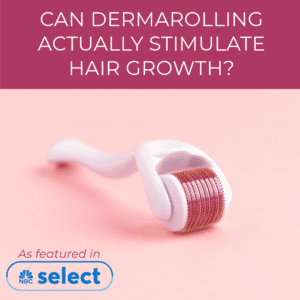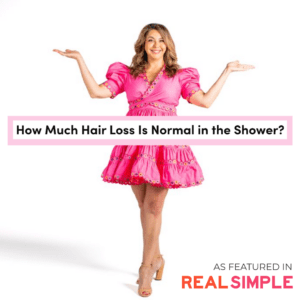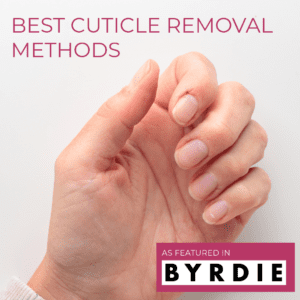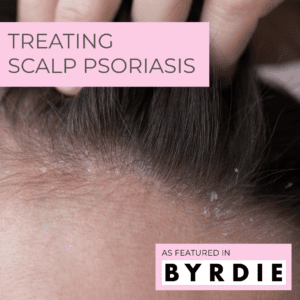Korean Cleansing Oils and Double Cleansing | As Seen in InStyle
Cleansing oils are a gentle yet powerful way to remove makeup, sunscreen, and daily impurities without stripping your skin’s natural moisture. Dr. Mona Foad discusses their pros and cons, how to use them effectively, and how to choose the best formula for your skin in InStyle’s article.
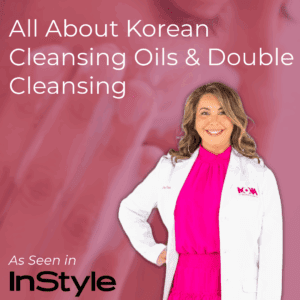
What are the potential pros & cons of using cleansing oils?
Cleansing oils are fantastic for gently removing makeup, sunscreen, and impurities without stripping your skin’s natural moisture. I personally love how they leave the skin feeling hydrated and soft. However, for some people, they might feel greasy or heavy if not emulsified properly. That’s why it’s important to follow up with a second cleanse to ensure your skin is thoroughly clean. For those with oily or acne-prone skin, be cautious because some oil-based cleansers can feel too rich. Always choose one that suits your specific skin needs.
What is the purpose of cleansing oils and double cleansing?
The purpose is to effectively break down and remove oil-based impurities like makeup and sunscreen. The oil in the first cleanse binds with the oils on your skin, making it much easier to dissolve and remove them. Then, the second cleanse with a gentle foaming or water-based cleanser ensures all remaining residue is removed, leaving your skin thoroughly clean but not stripped of its natural barrier. Double cleansing is a gentle yet effective way to clean the skin, especially if you wear makeup or sunscreen regularly.
What are some reasons someone would use cleansing oils and double cleanse?
I recommend double cleansing because it ensures a deeper, more thorough cleanse, particularly if you wear makeup or sunscreen daily. Cleansing oils are great for breaking down these products, and the second cleanse ensures you’re removing any lingering debris. This method is gentle and can be beneficial for all skin types, but it’s important to choose the right oil cleanser for your skin. It’s a great way to maintain a healthy skin barrier while keeping your routine simple and effective.
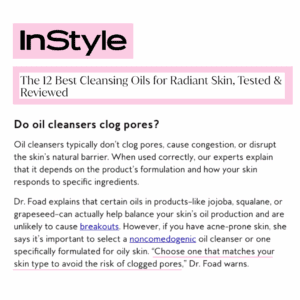
What can someone expect when using cleansing oil and double cleansing?
When using cleansing oils as part of a double cleansing routine, you’ll find your skin feeling clean, fresh, and comfortable—without that tight, dry feeling that some cleansers can leave behind. If you’re new to oil-based cleansers, the experience may feel different than traditional foam cleansers, but the added hydration is a definite bonus. After double cleansing, your skin will feel well-prepped for the rest of your skincare routine, making it more receptive to serums, moisturizers, and treatments.
What ingredients are beneficial for different skin types?
For dry skin, I suggest oils like jojoba or squalane, which are deeply hydrating without being too heavy. Squalene is a neutral essential oil and is tolerated by most people without concern for allergic reaction as well. For oily skin, tea tree oil or lavender can help balance sebum production while preventing excess oil without over-drying. If you have sensitive skin, opt for fragrance-free products or soothing oils like chamomile or rosehip. Ingredients like harsh alcohols or artificial fragrances can irritate sensitive skin, so check the ingredients before using any product.
How someone should apply cleansing oil to their skin?
I recommend applying cleansing oil to dry skin to effectively break down makeup and impurities. Gently massage it in circular motions across your face, taking your time to enjoy the process—this is your first step toward giving your skin some love. Once you feel like everything has dissolved, add warm water to emulsify the oil and rinse it off. Then, follow up with a second gentle cleanse to ensure your skin is fully clean and prepped for the rest of your skincare.
How can fragrance impact certain skin types?
Fragrance can be a major issue for sensitive skin, so I personally avoid products with strong fragrances. They can cause irritation or trigger breakouts, especially if you’re prone to redness or inflammation. For sensitive skin, I recommend fragrance-free products or those with calming ingredients to minimize the risk of irritation. It’s all about finding products that work with your skin, not against it.
What is the best Korean oil cleanser and why?
Avène XeraCalm A.D Lipid-Replenishing Cleansing Oil. I like this product because it offers patients a gentle cleanser that has a slight foam without drying you out. This gentle cleansing oil can be used on the face, body and scalp, and helps to balance the skin’s microbiome while restoring the skin barrier. The oil seals in moisture and helps protect against drying effects of water. In addition, Avène is known to be a brand that specializes in sensitive skin soI feel comfortable suggesting this to all my patients.
How do K-beauty cleansing oils differ from others on the market?
K-beauty cleansing oils tend to be lighter in texture and are known for their ability to emulsify, making them a great choice for anyone new to oil cleansing. They often feature soothing, skin-friendly ingredients like green tea or centella asiatica, which are wonderful for calming the skin while effectively cleansing. I really appreciate how K-beauty brands focus on hydration and supporting the skin’s barrier, which is a nice touch in a cleansing routine.
What ingredients or aspects do K-beauty brands use?
K-beauty brands are well-known for using gentle, nourishing ingredients like green tea, ginseng, and centella asiatica, which are excellent for maintaining skin health. They also incorporate cutting-edge technology to ensure their products are lightweight, hydrating, and effective. K-beauty products really emphasize skin barrier support, and I think that’s a huge reason why they’re so beloved. Their attention to detail when it comes to formulations is why I personally trust their products for my patients’ skincare routines.
Do oil cleansers clog pores?
When used correctly, oil cleansers typically don’t clog pores. In fact, certain oils, like jojoba oil, can help balance your skin’s oil production. However, if you have acne-prone skin, it’s important to select a non-comedogenic oil cleanser or one specifically formulated for oily skin. Choose one that matches your skin type to avoid the risk of clogged pores.
Do oil cleansers cause acne?
Oil cleansers don’t usually cause acne, but it really depends on your skin type and the formula you’re using. They can be helpful for acne-prone skin because they break down excess oil, makeup, and impurities without stripping the skin. However, if the oil cleanser isn’t suitable for your skin, it might leave your skin feeling too heavy. Always pick one that’s tailored for your specific skin needs.
Are oil cleansers good for aging skin?
Oil cleansers are excellent for aging skin because they maintain moisture balance, preventing the skin from becoming dry or tight. Oils like argan and rosehip oil are great choices since they’re rich in antioxidants and help promote collagen production, which is key for maintaining youthful-looking skin. They nourish the skin without stripping it, which is ideal for mature skin.
Should I use an oil cleanser with a normal cleanser?
If you wear makeup or sunscreen daily, double cleansing with an oil cleanser followed by a gentle, non-stripping cleanser is a great routine. The oil cleanser will break down makeup and sunscreen, while the second cleanser ensures any remaining residue is removed. This method leaves your skin clean without causing any irritation.
Should I use lotion after an oil cleanser?
After using an oil cleanser, I absolutely recommend applying a moisturizer to lock in hydration. This helps to replenish any lost moisture, keeping your skin barrier strong and healthy.
Is there anything else to share about cleansing oils?
One thing I always emphasize is that cleansing oils aren’t just about removing makeup. They’re also about maintaining your skin’s natural barrier. They help keep your skin hydrated and balanced while cleansing, and I don’t think people should be afraid of oils. When used correctly, they’re a great tool to support healthy, nourished skin.


